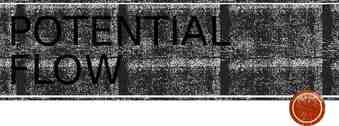Basic electricity concepts
27 Slides3.40 MB
Basic electricity concepts
Electricity water simili water pressure constrict water Electrical pressure (voltage) hose resistance electronic charge water out second charge out second Wire (electrical component) Official circuit symbol for fixed value resistor
Resistance analogies Effect on R of increasing hose or wire length on flow Effect on R of increasing hose or wire cross section on flow Effect on R of increasing pressure or voltage R Ro *L/A none
Temperature effects on wire resistance As temperature increases, more random motion in wire disrupts flow of current ( scatters e-) T increase causes resistance to increase in normal conductors conversely, lower temperatures decrease resistance. R R RoeE/T Some materials’ R 0 below T threshold superconductors T
Japan’sMag Lev Bullet Train’ 200 mph !
Basic Electrical units unit Symbol unit Qualitative description charge Q or q Coulomb (coul C) or Faradays (F)* Basic material pushed around in electronic components potential V or E Volts (joules/coul) pressure’ that pushes charge across the components current I or i Amperes amp (coul/second A) Charge flow rate Resistance (impedance) R or Z Ohms (volts/amp ) friction’ slowing down charge flow * 96,485 C 1 F
Ohm’s law DC Simple : V I x R Scalar versions of V, I R simple resistance Vector versions of V, I AC General: Pertinent manipulations: R V I Z Z complex impedance including capacitance, inductance Dot product I*Z*cos along I vector direction R V volts I coul/s ohms joules *s ohms coul2
Power Power P energy/second joules/second watts P V*I joules *coul joules coul sec sec Applying Ohm’s law: substitute V IR or I V/R P (IR)*I I2R P V* (V) V2 ( R) R
Kirchoff’s Voltage and Current Laws (KVL and KCL) KVL: In any closed loop the voltage sum 0 Vapplied IjRj KCL: At any point in a circuit, the sum of current in and out of that point 0 Iin Iout
Basic Instrumentation Device Using Resistors: Wheatstone Bridge (Pierpont 1843 !) At null’ on G*: R4 R2 R3 R1 R1 and R2 are usually fixed V Often the test R G (usually adjustable) G galvanometer Or current meter I *no current across bridge where G is
Modern meters that measure across G’: Digital volt-ohm meters (DVM)
Red probe here for high (I) current (20 mA max) Red probe here for mA current (I) Com common ground’ Red probe here for V (volts) and (ohms)
Circuit configurations for V, I and R in DVMs (your text)
AC vs DC In the beginning V there was only DC Then came AC V on off Time - DC is simple & extension of a battery Time AC is time varying & not an extension of a battery
Some history .in the time before there were wall sockets Do we use DC or AC ? Eat dirt, American scum2 Die, Euro trash ! Nickolai Tesla sprach1 ”Nein, nein.diese AC ist ganz besser, dumpkopf !!” (Use AC, dummy !) Thomas Edison sez DC is the all-American way, baby !” Ralph Fiennes winner of the Nicolai Tesla look-a-like contest 2 . Actually, he was Serbian, not German, but the point is, he was not American 1
History (continued): the big fight The Champ I have 1093 US patents and you don’t, you greasy foreign maggot The challenger Left standing Tesla coil demonstrates that AC can be transformed’ up and down in V without (much) loss . Serbia rules, American pigdog ! (and I got 700 patents, turkey) (and still used safely ) The Winner Tesla showboating SUPERIOR PHYSICS the safety features
Historic aside: Who is credited with inventing the radio? The usual answer: Marconi Actually, after a long fight, US Supreme Court invalidated all of Marconi’s patents in 1937 and declared this guy the real inventor: Tesla
AC generators: How to make AC power Coils reverse of Lorentz force Coils parallel with field Coil perpendicular to field Coil anti-perpendicular to field
Advantages of AC generation 1) V and I increase with: Speed of turning : mechanical electrical conversion) strength of magnet (H) Number (N) and area (A) of wire turns Angle it makes with field ( ) I N*A*sin * H/ t A 2)Can transform’ or step’ voltage through winding pairs with low loss. Vin Vout Vout # windings out Vin # windings in )
One more advantage Sine wave input into capacitor Sine wave out of capacitor Output shape input shape volts DC into capacitor DC out of capacitor Output shape input shape
Niagara Falls AC generator (Tesla’s big chance) First commercial AC generator: Buffalo NY (Tesla design) US side of Niagara Falls Schematic of hydroelectric power plant
Niagara (continued) Total generation 4.4 GW
One Problem with AC Generation: Coal-fired power stations Six 100 MW stations
Global warming consequences “Hey, I’m not analytical. I don’t spend time thinking about why I do things.” Our ex -Prez Aboard Air Force One 6/4/03 Part of why we’re in such a mess No action or initiative on alternative energy in 8 years of Bush rule
And this guy is making it still worse
































